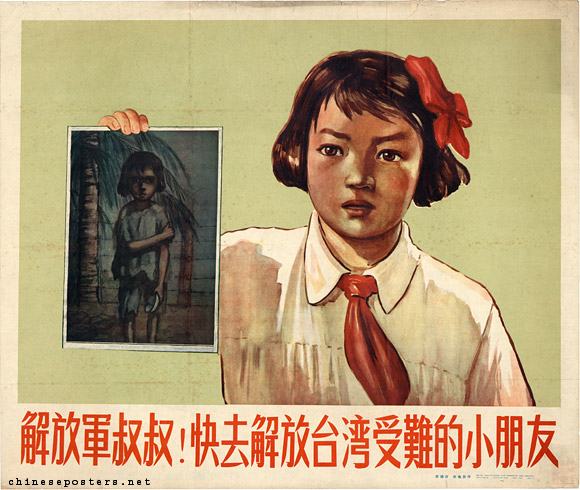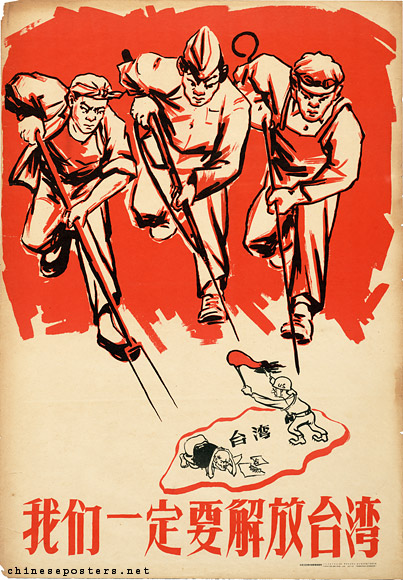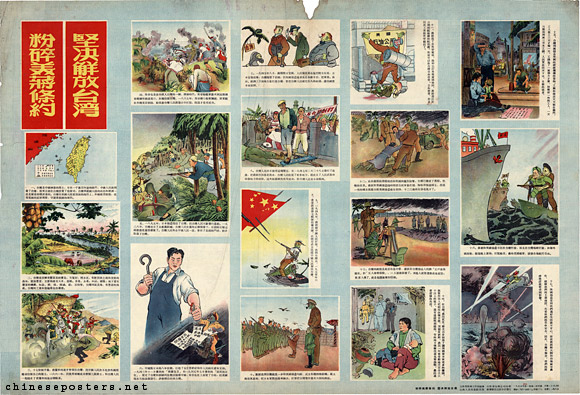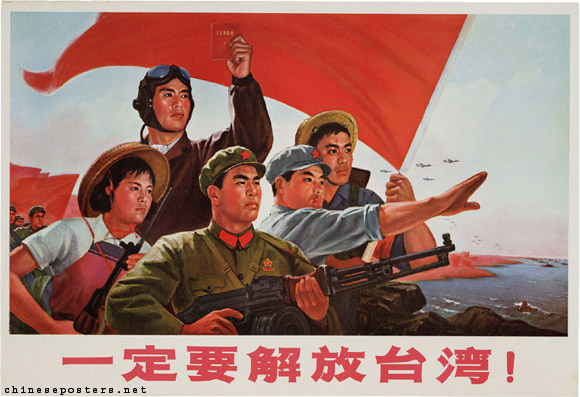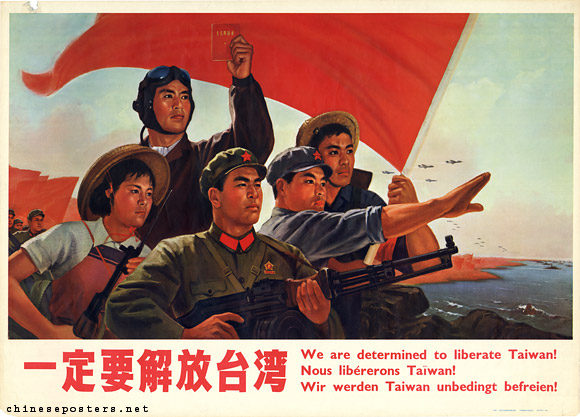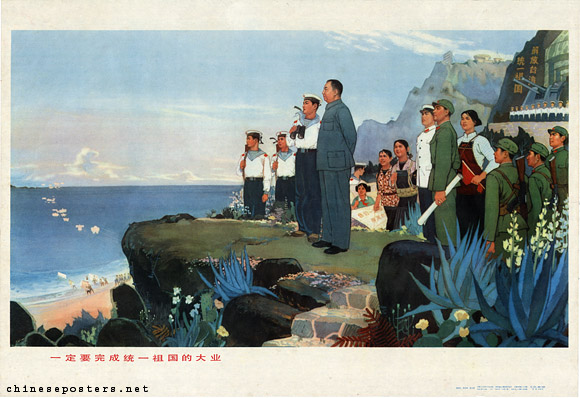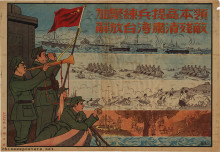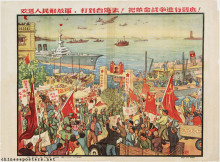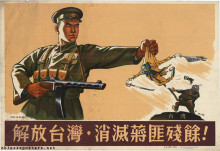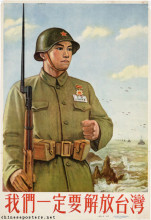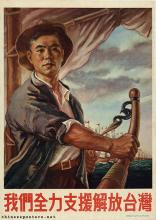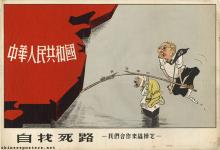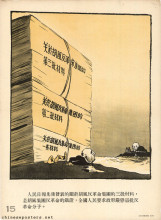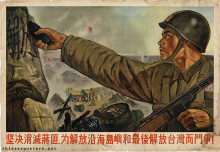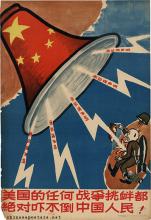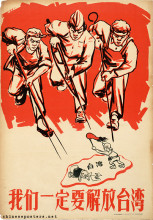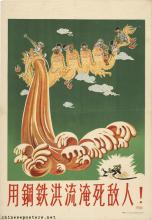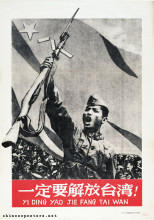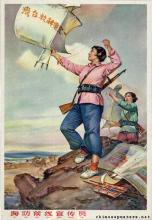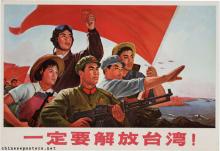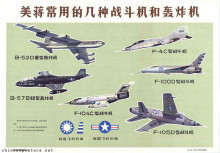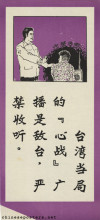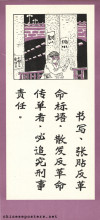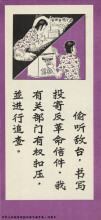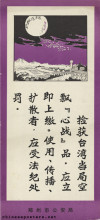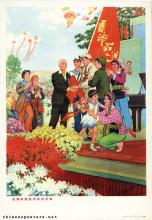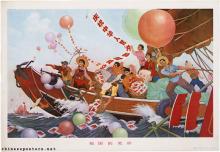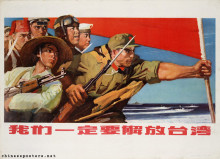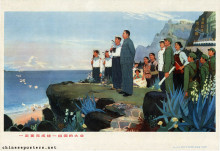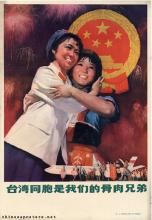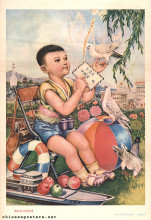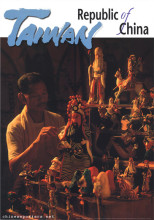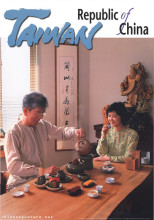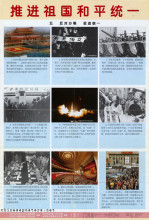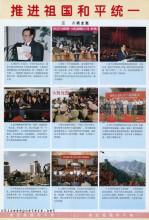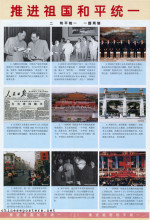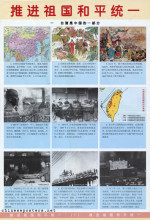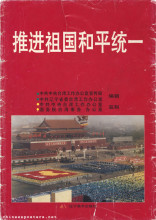Already before the mainland was ‘liberated’ officially in 1949, plans existed to invade Taiwan in the process as well. Although the population at the time was already prepared for military action thanks to forceful propaganda, the plans came to naught.
Intervention of the U.S. Seventh Fleet in the Taiwan Strait in 1950 and the subsequent conflict in Korea caused the immediate liberation plans to be shelved. The American support for the GMD-regime played an important role in the anti-imperialist propaganda that at the time made heavy use of the ‘paper tiger’ imagery.
We must liberate Taiwan!, 1958
The Chinese were given to understand that their own struggle against imperialism would result in the liberation of what was called their tongbao (同胞, compatriots). Moreover, much was made of the alleged maltreatment of the Taiwanese - who were, after all, Chinese - at the hands of Americans. There was some veiled racism implied in these posters.
Resolutely liberate Taiwan, save the Taiwanese people from their misery!, 1955
During the Taiwan Strait crisis of 1954-1955, the PLA bombarded two islands off the coast of Fujian Province, Quemoy (Jinmen) and Matzu (Mazu), both administered by the Taiwanese. Taiwan retaliated in kind by bombing the mainland. In 1958, when the Great Leap Forward unfolded and Mao Zedong was convinced that the ‘East wind was prevailing over the West wind’, the bombings of Quemoy and Matzu were resumed with a vengeance. In both cases, the bombings were designed as a first step in the campaign to take the island.
After these two crises, something of a military stalemate developed until the late 1970s, although both China and Taiwan continued with small-scale armed skirmishes: China continued some of its bombings on odd numbered days, while Taiwan sent commando raids to strike at Chinese targets. Even the Cultural Revolution period was a relatively quiet one, although the posters at the time very much gave the impression that military action was imminent.
We will definitly free Taiwan, 1971
We are determined to liberate Taiwan!, ca. 1971
The Chinese did try to spread the words of Mao on Taiwan. The poster below shows how copies of the Little Red Book, sealed in little plastic bags, were set overboard fishing vessels. This propaganda offensive, presented as a magnanimous Chinese gesture to spread the gospel among the compatriots, clearly was intended to win the hearts and minds of the Taiwanese, but did not succeed.
The loving care of the mother country, 1976
In the 1980s, the live ammunition used in bombarding Quemoy and Matzu was traded in for shells filled with propaganda materials, which the Taiwanese reciprocated in kind. The resolution of the Taiwan issue has been high on the agenda of the successive generations of military and civilian PRC-leaders, including Ye Jianying and Hua Guofeng. The ‘One Country, Two Systems’-principle developed by Deng Xiaoping is often mentioned as the framework for reunification. The earlier application of the principle in the handovers of Hong Kong and Aomen (Macao) has convinced the Chinese leadership of its relevance.
We must certainly complete the great task of unifying the mother country, 1978
However, the threat of a military option is invoked regularly until the present day in order to avoid Beijing’s ultimate nightmare: Taiwan’s declaration of independence. In 1995-1996, the PLA was involved in naval and missile exercises off the coast of Taiwan in an attempt to influence the first presidential elections then taking place there. And when Chen Shui-bian, the leader of the Democratic Progressive Party (DPP) in which the GMD-opposition has been united, was elected as president in 2000, tensions in the Taiwan Straits flared up again. In 2002, the Taiwanese were urged to reach a prompt decision on China’s demands for reunification to avoid a military showdown.
The Navy in particular is seen as the faction that is pressing for a military resolution of the problem. Not without reason, military representatives have warned for a loss of the nation’s credibility when the promise of reunification fails to materialize after so many years of threats and cajoling. A military option might include a naval blockade to strangle the Taiwanese economy, rocket attacks and a full-fledged invasion. The largest unknown factor in a military solution continues to be the reaction of the United States, which on the hand ‘understands’ China’s claims over Taiwan without explicitly recognizing the ‘one China’-principle, but at the same time continues to provide military support for Taiwan. The fact that the US explicitly opposes Taiwan’s steps towards independence, thus supporting the status quo, has not made the situation any clearer.
